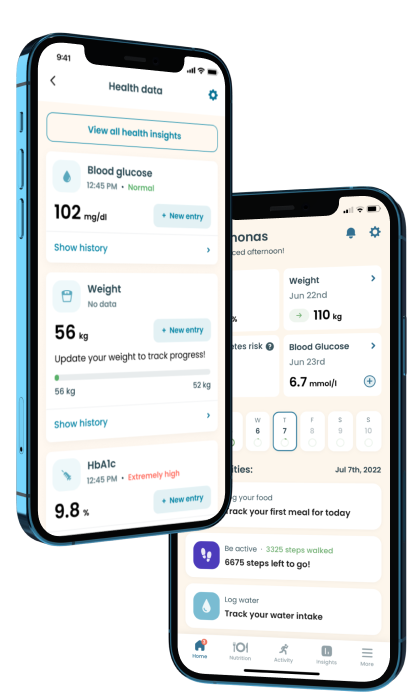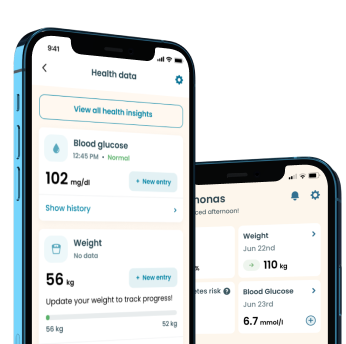White Bread and Diabetes

Not good
71
261 kcal
Bread is a popular food eaten by people around the world. However, white bread, in particular, is relatively high in carbs, stirring up mixed reactions in people, especially diabetics. Many are unsure about just how many slices of bread are safe for consumption without putting themselves at risk.
So, is white bread consumption bad for diabetics? The answer to this is a controversial one. While white bread does present a few beneficial nutrients, research on diabetes and white bread suggest a contrary opinion, as we would observe in this article.
Nutritional value
- Protein 8.9 g
- Carbohydrate 49 g
- Fat 3.3 g
- Fiber 2.7 g
- Sugar 5.7 g
- Cholesterol 0 g
The Nutrient Profile of White Bread
All slices of bread are not equal. When it comes to nutritional contents, the nutrients in any white bread depend on the ingredients and its baking method.
Generally, a slice (approx 1 oz) of commercially prepared white bread offers a massive 13.4 g of carbs, a meager 0.6 g of fiber, and 2.57 g of protein. Also, white wheat bread has a glycemic index (GI) of 75 and could cause rapid blood sugar levels when consumed.
Furthermore, white bread is also high in calories at 73 cal per slice, meaning it may not be ideal for those looking to keep their weight in check. This is because it’s pretty easy to eat many pieces at a go. However, this baked product is rich in calcium, potassium, and phosphorus.
Take a quiz
Discover what Klinio app can do for you
Healthy diabetes meal plan crafted just for YOU

Personalized workouts with no equipment needed

Track your progress with smart tracking tools

The Risks of Eating White Bread as a Diabetic
Despite its availability and easy access, white bread can be bad for your health if you’re managing diabetes. Namely, bread is composed chiefly of carbohydrates, which are quick and simple to digest; however, it's not exceptionally nutritious. Consuming foods containing highly processed carbohydrates can raise your blood sugar levels.
Also, a diet high in simple carbs, such as prepared white bread, can lead to weight gain and an increased risk of diabetes, heart disease, and other lifestyle-related chronic diseases. According to Dr. Rupali Datta, a nutrition consultant, when you eat white bread and other flour foods, the blood sugar level can rise quickly and drop quickly, which is risky.
Lastly, the added sugars or sugar substitutes included in a lot of bread can also cause a spike in blood sugar levels.
Research on Diabetes and White Bread
According to a 2004 Australian research carried out by a team that includes Allison Hodge, MENVSC, of the Cancer Council in Victoria, Australia, eating white bread is linked to an elevated risk of type 2 diabetes. This was the result following the study of the diets and health records of 36,787 men and women without diabetes in Australia over four years. Notably, those who ate the most white bread—over 17 slices weekly—were most likely to have diabetes. In light of this discovery, the intake of bread with low GI (like specialty grain bread) in place of white bread could help reduce type 2 diabetes risk.
Breads Suitable For Diabetics
People with diabetes can choose a suitable product by understanding the packaging and labeling of bread. Presented below are different types of bread that may be better for diabetes management:
Fiber-Enriched Whole-Grain Bread: Fiber is a non-digestible carbohydrate that promotes a feeling of fullness when taken. It can also aid blood sugar control. Remarkably, soluble and insoluble fiber has been shown in studies to help slow digestion and lower blood sugar spikes after meals.
Hence, the consumption of bread rich in fiber may aid blood sugar management.
Other suitable bread types include:
- Multi-grain sandwich bread
- Grain-free bread
- Low-carbohydrate tortillas
Note: These bread are still high in carbohydrates; hence, you should consume them in moderation.
Summary
Overall, white bread offers little protein and fiber that may be beneficial to people with diabetes. However, this is overshadowed by its high carb and calorie content, as well as its high GI value. Hence, it’s crucial to speak to a doctor or dietician before eating this type of bread. In cases where you have to eat it, do so in moderation, or opt for low GI variants like fiber-enriched whole-grain bread.

Download Klinio app!
Get more by downloading our free Klinio App. Analyze your health, form new habits and manage your diabetes anytime, anywhere.
OR
SCAN QR CODE



GET THE APP











